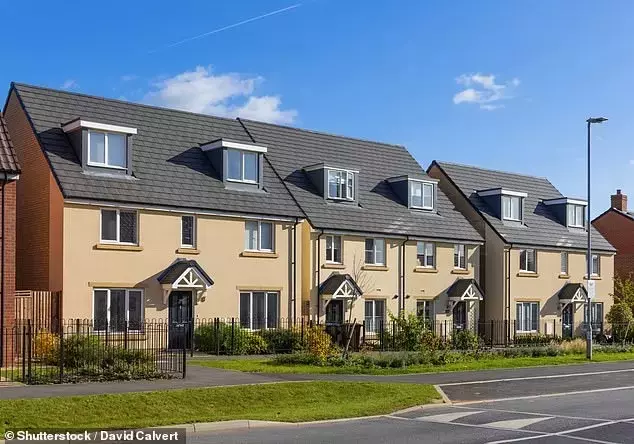



A recent analysis indicates that a substantial portion of British individuals securing mortgages are choosing two-year fixed-rate products. This trend, which represents a notable departure from previous preferences, raises concerns among financial specialists. They suggest that borrowers might be exhibiting excessive confidence regarding the speed at which interest rates will fall, potentially leading to unforeseen financial challenges when these shorter-term agreements conclude.
Data released by the Bank of England shows that from April to June of the current year, approximately 50% of new mortgage agreements were for two-year fixed rates. In contrast, only 36% of borrowers opted for five-year fixed deals. The remaining portion selected variable rates or other fixed terms, such as three or ten years. This marks a clear change from 2022, a period characterized by rising interest rates, when longer five-year fixes were more popular as a means to stabilize monthly payments.
Today's borrowers appear to be banking on a rapid decrease in mortgage rates, driven by expectations of Bank of England interest rate cuts. However, financial experts warn that this optimistic outlook might be misguided. They contend that a more prolonged fixed-rate period should be carefully considered, given the current economic climate.
Many borrowers harbor hopes of a return to the exceptionally low interest rates witnessed before 2022, with some perhaps anticipating rates below 1%. Peter Simson, Director of Mortgages at MPowered, highlights a 'muscle memory mindset,' where individuals believe rates will continue to decline, possibly reverting to those extremely low levels. Simson emphasizes that such an environment was not healthy for the housing market and is highly improbable in the foreseeable future.
The Bank of England's efforts to curb inflation have been slower than desired, with inflation remaining at 3.8% in September, unchanged from August. This persistent inflation suggests that a reduction in the base rate, which directly impacts mortgage rates, is unlikely to occur within the current year. Market projections currently indicate that the base rate will not decrease until February of next year, with an expected cut of 0.25 percentage points, followed by another reduction in the summer. This trajectory would see interest rates drop from 4% to 3.5% by this time next year.
Despite these anticipated reductions, forecasts suggest that a 3.5% base rate may represent the lowest point achievable. Even if these rate cuts materialize as expected, their immediate influence on fixed-rate mortgage pricing is likely to be minimal. Eamonn Prendergast, a chartered financial adviser at Palantir Financial Planning, notes that until inflation demonstrates a decisive downward trend, the Bank of England will find it difficult to justify further rate cuts. This implies that higher borrowing costs will persist for households and businesses, with mortgage holders facing continued pressure.
The pricing of fixed-rate mortgages is heavily influenced by Sonia swap rates, which reflect inter-bank lending rates based on future interest rate expectations. Currently, two-year and five-year Sonia swaps are already below the Bank of England's base rate, indicating that future rate cuts have largely been factored into existing mortgage prices. For instance, the most competitive two-year fixed rate available is presently 3.82%, even though the Bank of England base rate stands at 4%. As of October 21st, two-year Sonia swaps were at 3.57%, and five-year swaps were at 3.62%. This pre-emption of rate cuts suggests that current mortgage rates might be as favorable as they will get for some time, unless fundamental interest rate expectations undergo a significant shift.
Experts are increasingly concerned that borrowers opting for short-term fixed rates may be making a strategic error. Stimson warns that a growing number of households are fixing for two years when a longer-term option might be more prudent, especially as the interest rate cycle approaches its potential trough. He reiterates that fixed-rate mortgages incorporate future base rate cuts via interest rate swaps, and with two further cuts already priced in, current mortgage rates could be near their lowest point. Stimson further cautions that future interest rate increases are a possibility, which could result in a harsh reality for those remortgaging in 2027 after choosing a two-year fix in 2025. He cites considerable uncertainty surrounding inflation, broader economic trends, and the potential impact of future policy announcements on financial markets as key factors influencing the future direction of rates.
